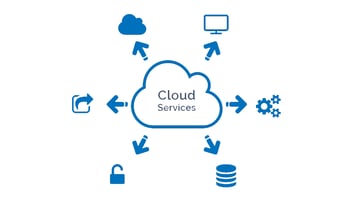Why Integrate CDNs with Cloud Services? When you integrate a Content Delivery Network (CDN) with...
Best Practices for CDN Integration with Existing IT Systems
Imagine you're sitting in a packed stadium, watching your favorite team play. Every second counts, every move is thrilling, and the performance is exhilarating. Now imagine if the game was broadcasted with a slight lag—how frustrating would that experience be? Welcome to the world of content delivery networks (CDNs), where milliseconds matter and seamless integration with existing IT systems can make or break digital experiences.
In today's hyper-connected world, the efficient delivery of digital content is crucial. A Content Delivery Network (CDN) can be your secret weapon, ensuring high-speed, reliable content delivery to users across the globe. However, integrating a CDN into your existing IT infrastructure is not without its challenges. Here's a deep dive into best practices for CDN integration, ensuring your systems run smoother than ever before.
1. Assessing Your IT Infrastructure
Before diving into the integration of a CDN, it's paramount to conduct a thorough assessment of your current IT infrastructure. Understand the existing network architecture, server setups, and data flow. Identify potential bottlenecks that a CDN can alleviate. This foundational step is essential in mapping out an effective integration strategy.
An in-depth assessment involves:
- Network Latency Analysis: Measure the latency across different points of your network to identify critical areas where a CDN can make the most impact.
- Server Load Assessment: Evaluate the load on your servers to determine how redistribution of traffic through a CDN can optimize performance.
- Content Inventory: Perform a content audit to understand which assets will benefit most from CDN caching and distribution.
2. Choosing the Right CDN Provider
All CDNs are not created equal. Choosing the right provider involves considering factors like global reach, performance capabilities, cost, and specific features that align with your business needs.
Key considerations include:
- Geographic Coverage: Ensure the CDN provider has edge servers in locations where your user base is concentrated.
- Performance and Reliability: Look for providers with a track record of high availability and low-latency performance.
- Cost versus Feature Set: Align the CDN costs with your budget while ensuring essential features such as DDoS protection, SSL support, and API access are included.
For example, BlazingCDN offers a robust set of features tailored to media companies, gaming industries, and SaaS providers, making it a versatile choice for various IT infrastructures.
3. Seamless Integration and Configuration
Once you've chosen a CDN provider, focus on seamless integration with minimal disruption to your services. This step involves configuring your CDN to cache content correctly, handle requests efficiently, and interact smoothly with your existing systems.
Critical integration steps include:
- DNS Configuration: Point your domain's DNS records to the CDN to begin routing traffic through their servers.
- Cache Rules: Define caching policies that determine how different types of content are cached and for how long.
- Load Balancing: Implement load balancing strategies to distribute traffic evenly across servers, reducing the load on any single server.
- Security Measures: Integrate security protocols and policies to protect against DDoS attacks, data breaches, and other cyber threats.
4. Monitoring and Optimization
Integration is only the beginning. Continuous monitoring and optimization are crucial to ensure that your CDN performs optimally and adapts to changing traffic patterns and content demands.
Effective monitoring practices include:
- Performance Metrics: Track key metrics such as latency, throughput, cache hit ratio, and error rates.
- Real-Time Analytics: Utilize analytics tools to gain real-time insights into CDN performance and troubleshoot issues promptly.
- Regular Audits: Conduct periodic audits to review and adjust CDN configurations based on performance data and user feedback.
A tool like CDN Calculator can help estimate costs and performance benefits, providing valuable data for ongoing optimization efforts.
5. Educating Your Team
Ensure that your IT team is well-versed in the nuances of CDN technology. Proper training will empower them to efficiently manage the CDN and troubleshoot any issues that arise during and after integration.
Training focus areas should include:
- CDN Basics: Understanding core concepts, benefits, and limitations of CDNs.
- Configuration Management: Learning how to set up and adjust CDN configurations to optimize performance.
- Troubleshooting: Developing skills to identify and resolve common CDN-related issues.
Real-World Examples and Case Studies
Learning from others' successes and challenges can provide valuable insights. Explore case studies and real-world examples of successful CDN integrations to identify best practices and potential pitfalls.
A noteworthy example is a case study on how an e-commerce giant optimized their website's speed and reliability by integrating a CDN, resulting in a significant increase in sales and customer satisfaction.
Conclusion
Integrating a CDN with your existing IT systems is no small feat. However, by following these best practices—from assessing your infrastructure and choosing the right provider, to seamless configuration, continuous monitoring, and team education—you can harness the full power of CDN technology to deliver superior digital experiences.
Implementing these strategies ensures your content is delivered swiftly and reliably, enhancing user satisfaction and retaining customer loyalty. For more detailed guidance on CDN solutions, explore offerings from BlazingCDN.
Call to Action
Ready to supercharge your content delivery? Share your thoughts in the comments below and consider following us on social media for the latest updates and insights on CDN technologies.



